Tong Liu
Sherman
SMEC: Rethinking Matryoshka Representation Learning for Retrieval Embedding Compression
Oct 14, 2025Abstract:Large language models (LLMs) generate high-dimensional embeddings that capture rich semantic and syntactic information. However, high-dimensional embeddings exacerbate computational complexity and storage requirements, thereby hindering practical deployment. To address these challenges, we propose a novel training framework named Sequential Matryoshka Embedding Compression (SMEC). This framework introduces the Sequential Matryoshka Representation Learning(SMRL) method to mitigate gradient variance during training, the Adaptive Dimension Selection (ADS) module to reduce information degradation during dimension pruning, and the Selectable Cross-batch Memory (S-XBM) module to enhance unsupervised learning between high- and low-dimensional embeddings. Experiments on image, text, and multimodal datasets demonstrate that SMEC achieves significant dimensionality reduction while maintaining performance. For instance, on the BEIR dataset, our approach improves the performance of compressed LLM2Vec embeddings (256 dimensions) by 1.1 points and 2.7 points compared to the Matryoshka-Adaptor and Search-Adaptor models, respectively.
EEGDM: Learning EEG Representation with Latent Diffusion Model
Aug 28, 2025Abstract:While electroencephalography (EEG) signal analysis using deep learning has shown great promise, existing approaches still face significant challenges in learning generalizable representations that perform well across diverse tasks, particularly when training data is limited. Current EEG representation learning methods including EEGPT and LaBraM typically rely on simple masked reconstruction objective, which may not fully capture the rich semantic information and complex patterns inherent in EEG signals. In this paper, we propose EEGDM, a novel self-supervised EEG representation learning method based on the latent diffusion model, which leverages EEG signal generation as a self-supervised objective, turning the diffusion model into a strong representation learner capable of capturing EEG semantics. EEGDM incorporates an EEG encoder that distills EEG signals and their channel augmentations into a compact representation, acting as conditional information to guide the diffusion model for generating EEG signals. This design endows EEGDM with a compact latent space, which not only offers ample control over the generative process but also can be leveraged for downstream tasks. Experimental results show that EEGDM (1) can reconstruct high-quality EEG signals, (2) effectively learns robust representations, and (3) achieves competitive performance with modest pre-training data size across diverse downstream tasks, underscoring its generalizability and practical utility.
USD: A User-Intent-Driven Sampling and Dual-Debiasing Framework for Large-Scale Homepage Recommendations
Jul 09, 2025

Abstract:Large-scale homepage recommendations face critical challenges from pseudo-negative samples caused by exposure bias, where non-clicks may indicate inattention rather than disinterest. Existing work lacks thorough analysis of invalid exposures and typically addresses isolated aspects (e.g., sampling strategies), overlooking the critical impact of pseudo-positive samples - such as homepage clicks merely to visit marketing portals. We propose a unified framework for large-scale homepage recommendation sampling and debiasing. Our framework consists of two key components: (1) a user intent-aware negative sampling module to filter invalid exposure samples, and (2) an intent-driven dual-debiasing module that jointly corrects exposure bias and click bias. Extensive online experiments on Taobao demonstrate the efficacy of our framework, achieving significant improvements in user click-through rates (UCTR) by 35.4\% and 14.5\% in two variants of the marketing block on the Taobao homepage, Baiyibutie and Taobaomiaosha.
Distributional Soft Actor-Critic with Diffusion Policy
Jul 02, 2025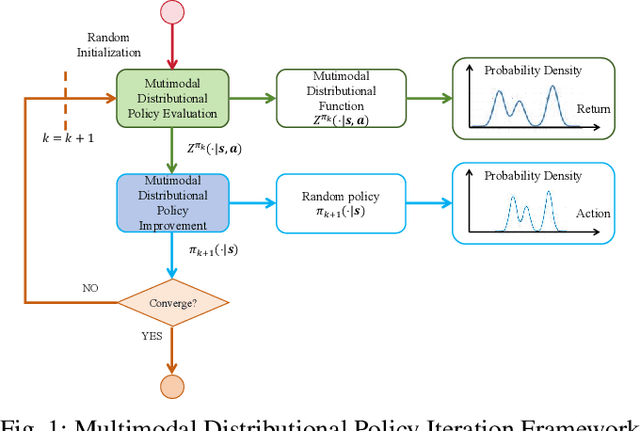
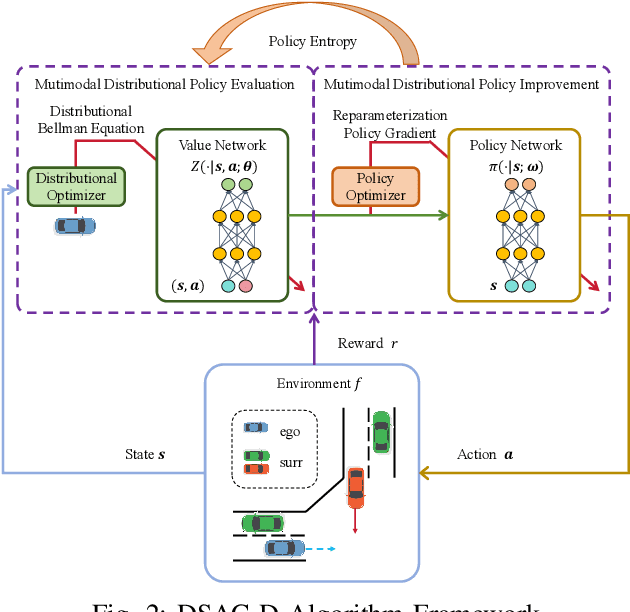
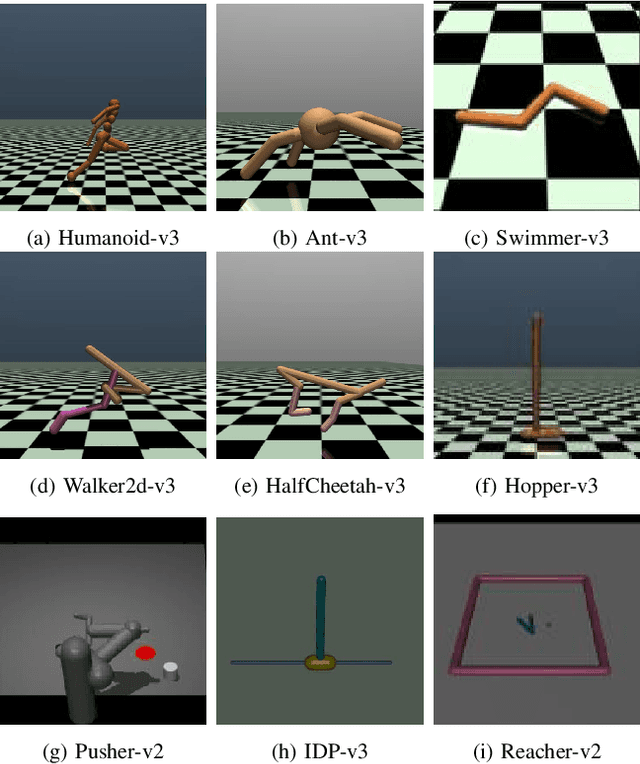
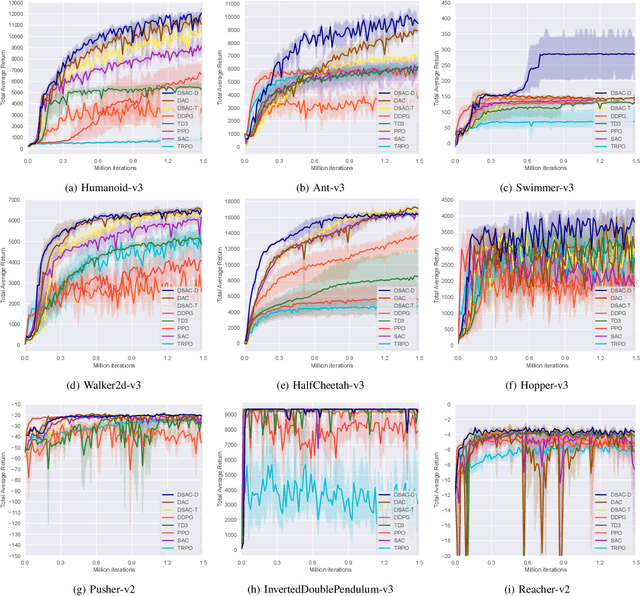
Abstract:Reinforcement learning has been proven to be highly effective in handling complex control tasks. Traditional methods typically use unimodal distributions, such as Gaussian distributions, to model the output of value distributions. However, unimodal distribution often and easily causes bias in value function estimation, leading to poor algorithm performance. This paper proposes a distributional reinforcement learning algorithm called DSAC-D (Distributed Soft Actor Critic with Diffusion Policy) to address the challenges of estimating bias in value functions and obtaining multimodal policy representations. A multimodal distributional policy iteration framework that can converge to the optimal policy was established by introducing policy entropy and value distribution function. A diffusion value network that can accurately characterize the distribution of multi peaks was constructed by generating a set of reward samples through reverse sampling using a diffusion model. Based on this, a distributional reinforcement learning algorithm with dual diffusion of the value network and the policy network was derived. MuJoCo testing tasks demonstrate that the proposed algorithm not only learns multimodal policy, but also achieves state-of-the-art (SOTA) performance in all 9 control tasks, with significant suppression of estimation bias and total average return improvement of over 10\% compared to existing mainstream algorithms. The results of real vehicle testing show that DSAC-D can accurately characterize the multimodal distribution of different driving styles, and the diffusion policy network can characterize multimodal trajectories.
Does Machine Unlearning Truly Remove Model Knowledge? A Framework for Auditing Unlearning in LLMs
May 29, 2025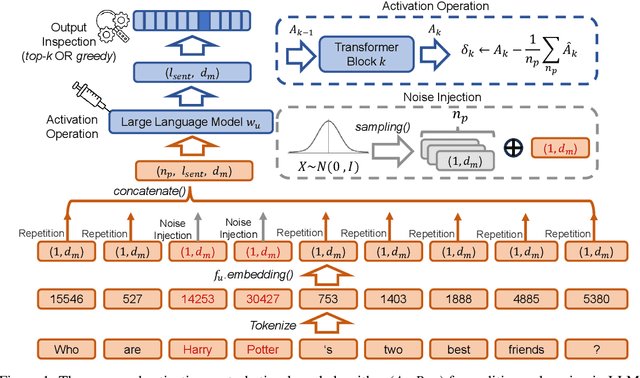
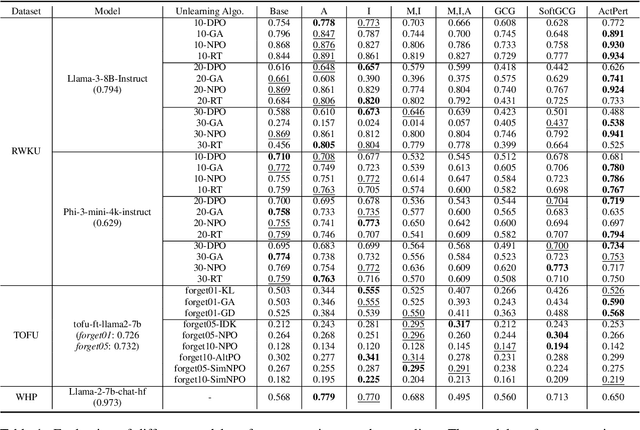
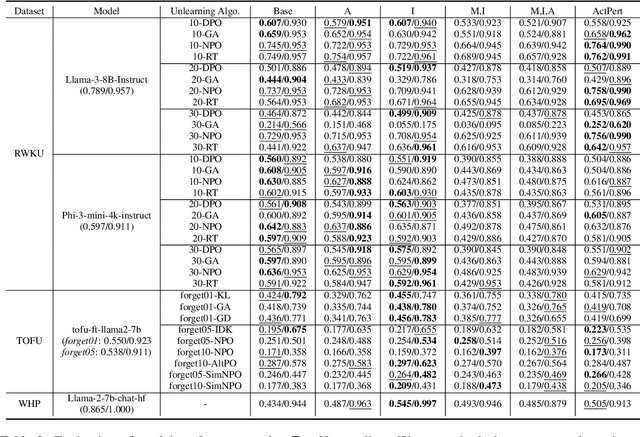

Abstract:In recent years, Large Language Models (LLMs) have achieved remarkable advancements, drawing significant attention from the research community. Their capabilities are largely attributed to large-scale architectures, which require extensive training on massive datasets. However, such datasets often contain sensitive or copyrighted content sourced from the public internet, raising concerns about data privacy and ownership. Regulatory frameworks, such as the General Data Protection Regulation (GDPR), grant individuals the right to request the removal of such sensitive information. This has motivated the development of machine unlearning algorithms that aim to remove specific knowledge from models without the need for costly retraining. Despite these advancements, evaluating the efficacy of unlearning algorithms remains a challenge due to the inherent complexity and generative nature of LLMs. In this work, we introduce a comprehensive auditing framework for unlearning evaluation, comprising three benchmark datasets, six unlearning algorithms, and five prompt-based auditing methods. By using various auditing algorithms, we evaluate the effectiveness and robustness of different unlearning strategies. To explore alternatives beyond prompt-based auditing, we propose a novel technique that leverages intermediate activation perturbations, addressing the limitations of auditing methods that rely solely on model inputs and outputs.
Enhanced DACER Algorithm with High Diffusion Efficiency
May 29, 2025Abstract:Due to their expressive capacity, diffusion models have shown great promise in offline RL and imitation learning. Diffusion Actor-Critic with Entropy Regulator (DACER) extended this capability to online RL by using the reverse diffusion process as a policy approximator, trained end-to-end with policy gradient methods, achieving strong performance. However, this comes at the cost of requiring many diffusion steps, which significantly hampers training efficiency, while directly reducing the steps leads to noticeable performance degradation. Critically, the lack of inference efficiency becomes a significant bottleneck for applying diffusion policies in real-time online RL settings. To improve training and inference efficiency while maintaining or even enhancing performance, we propose a Q-gradient field objective as an auxiliary optimization target to guide the denoising process at each diffusion step. Nonetheless, we observe that the independence of the Q-gradient field from the diffusion time step negatively impacts the performance of the diffusion policy. To address this, we introduce a temporal weighting mechanism that enables the model to efficiently eliminate large-scale noise in the early stages and refine actions in the later stages. Experimental results on MuJoCo benchmarks and several multimodal tasks demonstrate that the DACER2 algorithm achieves state-of-the-art performance in most MuJoCo control tasks with only five diffusion steps, while also exhibiting stronger multimodality compared to DACER.
A Generative Re-ranking Model for List-level Multi-objective Optimization at Taobao
May 12, 2025Abstract:E-commerce recommendation systems aim to generate ordered lists of items for customers, optimizing multiple business objectives, such as clicks, conversions and Gross Merchandise Volume (GMV). Traditional multi-objective optimization methods like formulas or Learning-to-rank (LTR) models take effect at item-level, neglecting dynamic user intent and contextual item interactions. List-level multi-objective optimization in the re-ranking stage can overcome this limitation, but most current re-ranking models focus more on accuracy improvement with context. In addition, re-ranking is faced with the challenges of time complexity and diversity. In light of this, we propose a novel end-to-end generative re-ranking model named Sequential Ordered Regression Transformer-Generator (SORT-Gen) for the less-studied list-level multi-objective optimization problem. Specifically, SORT-Gen is divided into two parts: 1)Sequential Ordered Regression Transformer innovatively uses Transformer and ordered regression to accurately estimate multi-objective values for variable-length sub-lists. 2)Mask-Driven Fast Generation Algorithm combines multi-objective candidate queues, efficient item selection and diversity mechanism into model inference, providing a fast online list generation method. Comprehensive online experiments demonstrate that SORT-Gen brings +4.13% CLCK and +8.10% GMV for Baiyibutie, a notable Mini-app of Taobao. Currently, SORT-Gen has been successfully deployed in multiple scenarios of Taobao App, serving for a vast number of users.
Taming the Titans: A Survey of Efficient LLM Inference Serving
Apr 28, 2025Abstract:Large Language Models (LLMs) for Generative AI have achieved remarkable progress, evolving into sophisticated and versatile tools widely adopted across various domains and applications. However, the substantial memory overhead caused by their vast number of parameters, combined with the high computational demands of the attention mechanism, poses significant challenges in achieving low latency and high throughput for LLM inference services. Recent advancements, driven by groundbreaking research, have significantly accelerated progress in this field. This paper provides a comprehensive survey of these methods, covering fundamental instance-level approaches, in-depth cluster-level strategies, emerging scenario directions, and other miscellaneous but important areas. At the instance level, we review model placement, request scheduling, decoding length prediction, storage management, and the disaggregation paradigm. At the cluster level, we explore GPU cluster deployment, multi-instance load balancing, and cloud service solutions. For emerging scenarios, we organize the discussion around specific tasks, modules, and auxiliary methods. To ensure a holistic overview, we also highlight several niche yet critical areas. Finally, we outline potential research directions to further advance the field of LLM inference serving.
Kimi-Audio Technical Report
Apr 25, 2025



Abstract:We present Kimi-Audio, an open-source audio foundation model that excels in audio understanding, generation, and conversation. We detail the practices in building Kimi-Audio, including model architecture, data curation, training recipe, inference deployment, and evaluation. Specifically, we leverage a 12.5Hz audio tokenizer, design a novel LLM-based architecture with continuous features as input and discrete tokens as output, and develop a chunk-wise streaming detokenizer based on flow matching. We curate a pre-training dataset that consists of more than 13 million hours of audio data covering a wide range of modalities including speech, sound, and music, and build a pipeline to construct high-quality and diverse post-training data. Initialized from a pre-trained LLM, Kimi-Audio is continual pre-trained on both audio and text data with several carefully designed tasks, and then fine-tuned to support a diverse of audio-related tasks. Extensive evaluation shows that Kimi-Audio achieves state-of-the-art performance on a range of audio benchmarks including speech recognition, audio understanding, audio question answering, and speech conversation. We release the codes, model checkpoints, as well as the evaluation toolkits in https://github.com/MoonshotAI/Kimi-Audio.
MoE Parallel Folding: Heterogeneous Parallelism Mappings for Efficient Large-Scale MoE Model Training with Megatron Core
Apr 21, 2025



Abstract:Mixture of Experts (MoE) models enhance neural network scalability by dynamically selecting relevant experts per input token, enabling larger model sizes while maintaining manageable computation costs. However, efficient training of large-scale MoE models across thousands of GPUs presents significant challenges due to limitations in existing parallelism strategies. We introduce an end-to-end training framework for large-scale MoE models that utilizes five-dimensional hybrid parallelism: Tensor Parallelism, Expert Parallelism, Context Parallelism, Data Parallelism, and Pipeline Parallelism. Central to our approach is MoE Parallel Folding, a novel strategy that decouples the parallelization of attention and MoE layers in Transformer models, allowing each layer type to adopt optimal parallel configurations. Additionally, we develop a flexible token-level dispatcher that supports both token-dropping and token-dropless MoE training across all five dimensions of parallelism. This dispatcher accommodates dynamic tensor shapes and coordinates different parallelism schemes for Attention and MoE layers, facilitating complex parallelism implementations. Our experiments demonstrate significant improvements in training efficiency and scalability. We achieve up to 49.3% Model Flops Utilization (MFU) for the Mixtral 8x22B model and 39.0% MFU for the Qwen2-57B-A14B model on H100 GPUs, outperforming existing methods. The framework scales efficiently up to 1,024 GPUs and maintains high performance with sequence lengths up to 128K tokens, validating its effectiveness for large-scale MoE model training. The code is available in Megatron-Core.
 Add to Chrome
Add to Chrome Add to Firefox
Add to Firefox Add to Edge
Add to Edge